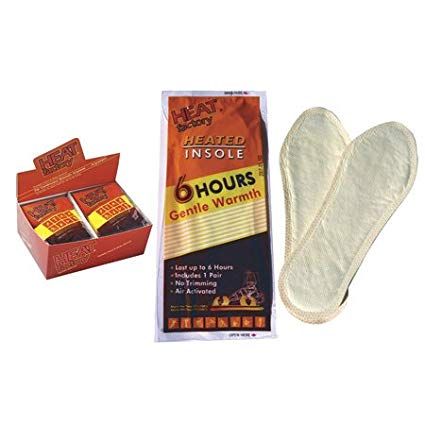

However, none of this would mean anything if the warmers didn’t actually work. (I’d love to tell you all about this, but – well – you’ll just have to wait.) There are a few more things that can be done to reduce the impact of single-use air-activated warmers, and Ignik is working on them, too.
#Burns from grabber hand warmers zip#
This means that if you’re out for just an hour, you can zip your warmer back into its package and save it for use later when the warmer is all used up, you can use the resealable bag for other things.įor RECYCLE, Ignik uses biodegradable materials in their warming matrix: You can cut them open and put it into a compost bin, or sprinkle it into your garden or yard. Ignik’s Air Activated Warmers have a similar mission and were created under “REDUCE-REUSE-RECYCLE” benchmarking guidelines.įor REDUCE, Ignik addresses this two ways: 1) They work when you open them because they use high-quality packaging materials that don’t let air in, so you don’t need to throw away 10% to 20% of every box before you use them and 2) They maintain usable heat for a longer time, and you can use ALL of the available heat for every unit, so you’re using fewer warmers to get the job done.įor REUSE, Ignik’s packaging has a zipper closure. How did it get there? Why is it there? We don’t know, but if I hadn’t picked it up it would rust-in-place until it’s gone, and that’s not for a very long time. For example, I found this one in the middle of nowhere on the private land where I hunt. The company was conceived primarily to reduce the use of the ubiquitous green propane canisters that you see literally EVERYWHERE. One of the things that brought me to Ignik is the fact that we align so strongly when it comes to waste. It just seemed wasteful to pay money to use something that you’re only going to throw into a landfill almost immediately when you can just toughen up. I found that they didn’t always work, that they didn’t last long if they did, and they were just something else I had to throw away. A lot of this point-of-view came from having tried other warmers. In part, it’s because I don’t like the waste, both of materials and money. My wife has always used similar warmers because she has Reynaud’s and medically she needs help keeping her fingers warm, but I’ve never been a fan of the category. Naturally, I jumped at the chance to test Ignik’s Air Activated Warmers last hunting season. I more often leave the stand because my hands and feet have gone numb and my lips are blue, than because I’m bored or have to pee. But staying warm has been a real problem. I’m learning to live with the boredom – listening and watching for what’s happening around me has become more of an active meditation – and managing the (how shall I say?.) “biological requirements” through timing my intake of fluids has become second-nature. I’m not a huge fan of tree stands to me, they’re at best an acquired taste, and most often they’re a necessary evil.Īs you might expect, I’m game for anything that’s going to make the experience of being in a tree stand more pleasant.

So I like to move when I hunt, because it’s what I’m used to, it’s more fun, and it’s easier to stay warm. The mule deer and elk that I grew up hunting range more widely – they were either there or they weren’t, and if they’re not there they can be miles away - so to hunt them you need to move, too. If you’re patient, if there are whitetails around eventually one will walk right past you. They’re ideal tools for hunting whitetail deer because these animals live their lives on relatively small patches of ground. I grew up hunting in places where tree stands aren’t often used. I’ve climbed big mountains in the Arctic, been up over 8,000 meters on a Himalayan Peak, traversed the Wind Rivers by ski in January, and yet when I think of being uncomfortable in the cold it’s almost always, always a memory of sitting in a tree stand right here in Wisconsin. These are the things I think about when I’m sitting in a tree stand before first light, watching the frost settle on me in thick white ribbons. It’s a truth so widely acknowledged it’s a platitude: “It’s always darkest before the dawn.” The corollary is also true: “It’s coldest before the sun comes up.” This is just a scientific fact, because when the sun rises and the atmosphere heats up the warm air pushes cold air down into the valleys and hollows, and it gets colder in the low places and in the shadows, by a LOT…


 0 kommentar(er)
0 kommentar(er)
